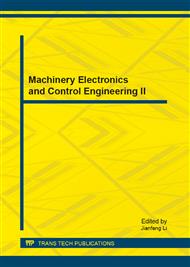p.359
p.365
p.370
p.374
p.378
p.382
p.387
p.391
p.395
The Direct Torque Control of Induction Motors in Hybrid Electric Vehicles Based on the AMEsim
Abstract:
Based on the hybrid vehicle model in AMESim, the real working conditions of an induction motor are analyzed and the drive system’s physical simulation models are built in AMESim. The direct torque control system is designed. And the control system runs by AMESim/Simulink co-simulations. Hence, the feasibility and effectiveness of the proposed design is verified.
Info:
Periodical:
Pages:
378-381
Citation:
Online since:
March 2013
Authors:
Price:
Сopyright:
© 2013 Trans Tech Publications Ltd. All Rights Reserved
Share:
Citation:


